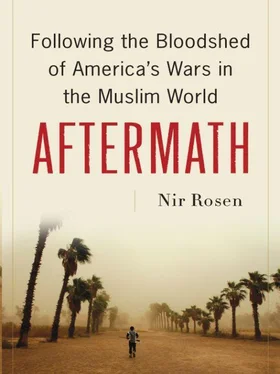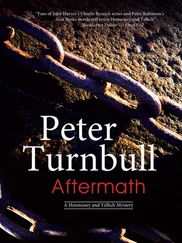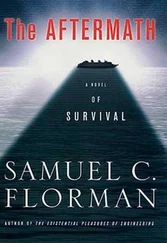Part Four

AFTERMATH
CHAPTER TEN
Lebanon: Toward Zero Hour
ONE EVENING IN THE SPRING OF 2008, I WAS SITTING ON A STOOP ON a dark street and speaking to several Sunni “concerned local citizens,” the new euphemism for American-backed militias in the Middle East. The young men were speaking of the danger coming from Shiites when I interrupted one of them, who was wearing a white sleeveless shirt, and said, “Don’t take this personally, but would you let your sister marry a Shiite?” In an instant he flattened his hand and moved his arm like a blade, slicing into the air the way he would slice her throat. I was not in Baghdad, where this might have been commonplace—I was in Beirut, where, as in pre-occupation Iraq, once it would not have been out of the ordinary for a Sunni and a Shiite to marry. In the early years of the American occupation of Iraq there were concerns about the Lebanonization of Iraq; but now it seemed Iraq was coming to Lebanon.
Sunni neighborhoods in Beirut felt insecure. Thuggish Shiite Amal supporters regularly zipped through on their scooters to shoot in the air and taunt them. Leaders from the Sunni-dominated March 14 coalition were being blown up occasionally, and it was clear the security forces could not protect them. The Future Movement’s leaders felt pressure to protect themselves and their anxious constituency, so they created a private security company to protect Future leaders and local militias in various Sunni neighborhoods throughout the country, established under the leadership of Salim Diab, former general coordinator of the Future Current.
Lebanon had no history of strife between Sunnis and Shiites. There had been class conflicts in the past—Sunnis were condescending to Shiites the way urban people often are to rural people, and Sunnis reviled Shiite religious traditions, which Shiites resented—but the divide had not been violent. Lebanese Sunni racism against Shiites was an artificial sectarianism, seeming to come out of nowhere. Lebanese Sunnis had never seen themselves exclusively as Sunnis. Even former Prime Minister Rafiq al-Hariri was not seen as a Sunni leader before his death. Until then he had not even had the support of most Sunnis, and Sunni leadership was not centralized. His death was exploited for political and sectarian reasons.
The first Sunni show of force was the Future Movement-backed demonstrations in February 2006 against the Danish cartoons of the Prophet Muhammad, which turned into a riot targeting Christians. Hariri’s son Saad was very embarrassed by this. Sunni power often seemed to be devoid of specific goals except keeping Shiites out of power. Historically Shiites were called the epithet “ mutwali .” But following Hizballah’s victory in the 2006 war, some urban Shiites reclaimed their victimization as a source of pride and made “ mutwali ” cool, in a way that resembled the African American reappropriation of the word “nigga.” Hizballah has never exploited sectarianism and has always gone out of its way to ease tensions. Hassan Nasrallah warned that the Americans were trying to drive a wedge between Shiites and Sunnis. But Hizballah could not escape the fact that it was a Shiite party.
From May to September 2007, the army had to contend with the crisis at the Nahr al-Barid Palestinian refugee camp, which left some 420 people killed, 168 of them soldiers. On September 4 of that year, Lebanese Defense Minister Elias Murr announced the cessation of 106 days of fighting against Islamic militants in the camp. It was the second war Lebanon had seen in two summers (see Chapter Six). The Lebanese army, which had stood by impotently in the summer of 2006 as the Israeli military destroyed much of the country in the name of fighting Hizballah, this time destroyed a refugee camp housing forty thousand people in the name of the war on terror. The three months of fighting with the jihadists from Fatah al-Islam, the worst the country had seen since its fifteen-year civil war ended in 1990, had been a distraction from growing internal divisions in Lebanon. These divisions had brought the country dangerously close to civil war once again in January 2007, when Sunnis and Shiites clashed on the streets.
There was a sense of foreboding that summer, a feeling that something worse was about to happen. The July war with Israel was still on everyone’s mind, and with it the fear that neither Israel nor Hizballah viewed the previous summer’s denouement as conclusive. Another war was ongoing in the north, with the interregnum punctuated by the occasional car bomb or assassination. And a third war, “the next civil war,” seemed to be on the horizon. Meanwhile, according to Lebanese political scientist Amer Mohsen, Lebanese politicians seemed like Shakespearean actors on a stage, “tragic characters who follow a path that was already charted for them—i.e., they have no agency in what is happening.” These politicians, Mohsen explained, “are clearly aware that, no matter what they do, events that control their country and destiny are decided by parties that are far larger than them.”
In November 2006, six Hizballah and Amal ministers resigned from the government coalition to protest violations of the agreed-upon rules by Prime Minister Fouad Siniora and his March 14 allies. They called for the government to uphold the tradition of cabinet consensus, which dated to the end of the civil war. The opposition began planning for street demonstrations, which were called off after a Christian politician was assassinated. That month a young Syrian man detonated his suicide vest on the Syrian border with Lebanon after he was denied permission to cross because his papers were discovered to be fake. He was said to belong to the Al Qaeda-linked Tawhid and Jihad organization. On December 1, 2006, the opposition condemned the government as illegitimate and staged a “sit-in” in downtown Beirut, establishing a huge tent city in Martyrs’ Square, the same place where anti-Syrian demonstrators had launched their March 14 “intifada.” Key roads were blocked, and traffic became unbearable. Numerous shops and boutiques in the downtown area went out of business. Some Sunnis began to view the sit-in as a Shiite occupation. Three days later, a Shiite supporter of Amal was shot dead. The Lebanese army was deployed on the city’s streets. On January 24, 2007, three young men were killed following a strike called by Hizballah, as opposition supporters blocked roads and burned tires. The next day four Lebanese were killed and more than 150 were injured in clashes at the Arab University of Beirut, near the Tariq al-Jadida neighborhood. It was left to Iran and Saudi Arabia to get involved and postpone further conflict. This was the nature of Lebanon’s sectarian system: it could never be stable; it was impossible to achieve ideal harmony. Lebanon was not a viable state.
Hizballah was the biggest party in the March 8 coalition, and its patron was Iran. Future, the Hariri family’s movement, was the biggest party in the March 14 movement, and its patron was Saudi Arabia. In a November 29, 2006, op-ed in the Washington Post , titled “Stepping Into Iraq; Saudi Arabia Will Protect Sunnis If the U.S. Leaves,” Nawaf Obaid, a Saudi foreign policy adviser to Saudi Prince Turki al-Faisal, warned that the Saudis would have to defend Iraq’s Sunnis from the Shiites of Iraq and Iran if the Americans did not. The Saudis were worried that the Americans were allowing the Iranians to win in Iraq and Lebanon. Along with the Jordanians, they would provide Iraq’s Sunnis with weapons and financial support. The Saudis had already commenced construction of a multibillion-dollar barrier between them and Iraq to isolate them from the violence they had helped foment. The Saudis also assumed the role of defenders of Lebanon’s Sunnis. Two years later I met Prince Turki—who had been the ambassador to Washington, intelligence chief, and liason to Osama bin Laden—and asked him if he really feared Iran. “Iran wants Mecca and Medina,” he said. “They want their ideology to control it.” Hizballah in Lebanon was completely an Iranian tool, he said. “The Saudi interest is for Iraq to maintain its Arab identity and not fall under Persian influence. Iran views Saudi Arabia as the little Satan, not Israel—read Khomeini’s work.” But he added that Iran’s vulnerability was its ethnic minorities: the Kurds, Baluch, and Azeris.
Читать дальше












